
If you ask a random person in the street to name few countries in South America, you’ll probably get answers like Brazil, Argentina or Chile, while the former Dutch colony of Suriname doesn’t ring familiar even among some of its neighboring countries. This remote nation is fortified by a thick jungle covering more than 90% of its surface, isolating it from most of the continent. Despite its location in Latin America, Suriname is affiliated both culturally and politically with the Caribbean nations, and known as a melting pot of ethnicities, mainly descendants of African slaves, East Indians and Javanese from the Indonesian island of Java. Suriname is one of the least visited countries in the western hemisphere, however the scarcity of tourists is not correlated with a lack of things to do and see, so here are our top 7 attractions.
The capital of Suriname and the country’s only actual city, Paramaribo is listed as a UNESCO world heritage site due its colonial wooden buildings, including the magnificent Saint Peter and Paul Cathedral, holding the record for the tallest wooden building in the Americas.
Most tourists visiting Paramaribo start their city tour at Fort Zeelandia, the four centuries old fortress, which changed hands couple of times throughout its history, is notoriously known for being the scene for mass execution and torture of political dissidents during the post-independence military rule in 1980’s.
Paramaribo is an epitome of the country’s diverse population, present in every part of town, though nowhere this co-existence between ethnicities and religions is reflected better than in Keizer St., where Neve Shalom Synagogue and Keizerstraat Mosque are located next to each other, peacefully sharing a piece of land, probably in deep contrast to anywhere else worldwide.

Neve Shalom Synagogue and Keizerstraat Mosque
photography by: Omri Westmark
Suriname is ranked as the most forested nation on earth, covered by a rainforest larger than the entire country of Nepal and home to thousands of animal species, some of which are endemic and cannot be found elsewhere.
The gigantic rainforest might seem at first as uniform, but it cannot be furthest from the truth, beside remote villages inhabited by the only African tribe outside of Africa, unique geological formations can be found everywhere, one of which is the spectacular Mt. Voltzberg in the Raleighvallen Nature Reserve.
The sugarloaf shaped mountain is reachable by a four hours walk from Fungo Island, where tourists visiting the reserve usually camp. Its peak at 150 meters above sea level reveals a 360° panoramic view of the surrounding rainforest, accompanied by a boisterous symphony of exotic animals, most notably the spider monkey.

The steep slopes of Voltzberg
photography by: Omri Westmark
No facets of Surinamese culture reflect the country’s diverse ethnic backgrounds better than its cuisine, incorporating a large plethora of influences from Indian, Javanese, African, Dutch and even Amerindian cuisines, while each cuisine also stands by itself in the national culinary arena.
What makes the Surinamese cuisine truly exceptional though are traditional dishes from around the world made with local ingredients, such as Nasi goreng, an originally Indonesian dish made with local herbs and vegetables from Suriname.
Surinamese cuisine also features some original dishes, most notably Moksi-alesi, a parboiled rice with fish or salted meat complemented by tomatoes, black eyed peas and coconut milk, and Pom, a casserole made from layers of sautéed chicken and grated potatoes mixed with lemon juice, tomatoes, nutmeg and other local spices.
Another intriguing item of the local cuisine is the locally made wine from exotic plants and fruits, including orange wine, ginger wine and even eggplant wine. The unusual wine flavors are the result of World War 2 which halted the importation of wines from Europe and forced the local market to adapt and develop an alternative version based on the equatorial climate, which is unsuitable for the cultivation of vineyards.
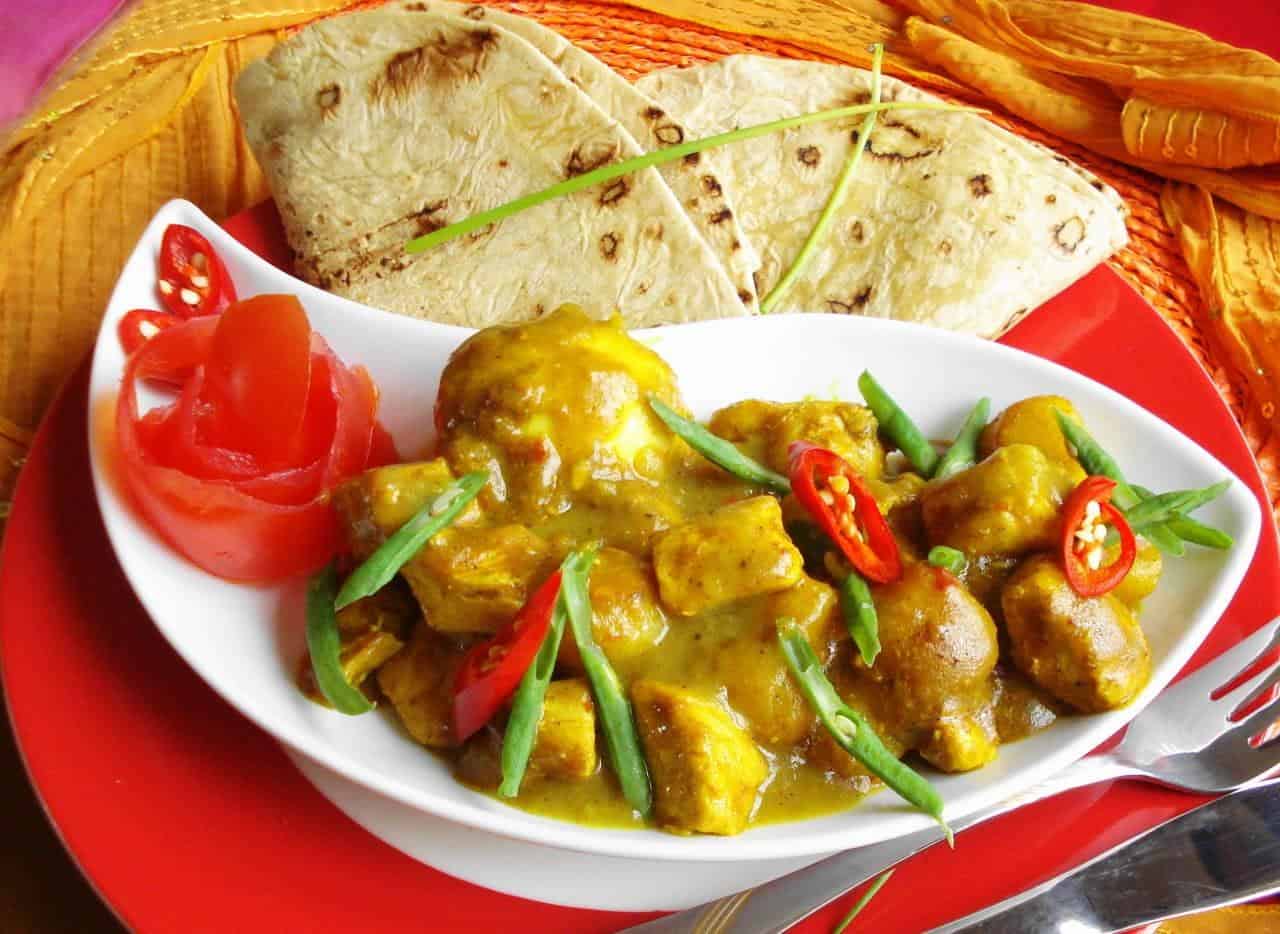
Surinamese style Roti Masala
photography by: Laig
Since the industrial revolution, many nations across the world experienced exponential economic growth, often resulting in a massive environmental degradation like water pollution and deforestation. Suriname on the other hand, hasn’t yet undergone such hyper-modernization process, leaving most of its virgin rainforest intact.
In contrary to many other developing countries, the Surinamese government decided to utilize the rainforest and its abundant wildlife as a source of revenue, consequently addressing the prevalent economic hardships in the country by making it a hotspot of Eco-tourism.
Eco-tourism in Suriname is divided into two sub-categories, adventurous expeditions to the country’s remote parts and nature reserves, while the second is laid back vacations in an eco-resort, mostly on a river bank.
What differentiate eco-resorts from a standard one is the fact that they are secluded, connected only by unpaved roads or a canoe trip, resulting in a minimum interference to the delicate balance of the rainforest eco-system around and complete isolation from any kind of modern civilization. The resorts usually offer a variety of activities, focusing on the nearby natural abundance, like kayaking, rainforest hiking and etc. Accommodation is ranging from a low cost hammock to a private bungalow with a river view for more deep pocketed travelers.
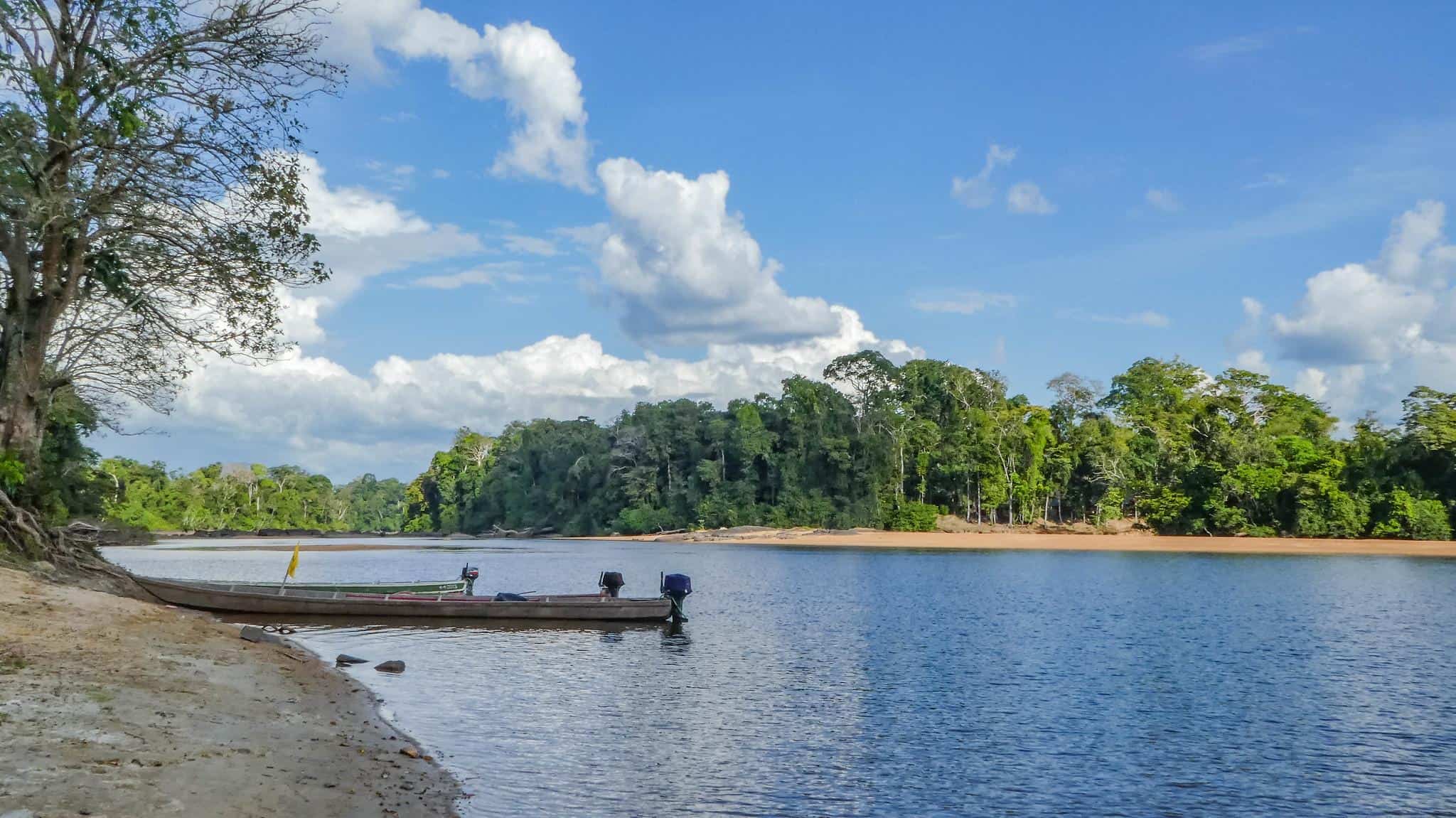
View of the Suriname River from the Gunsi Eco-resort
photography by: -JvL-
Located in the northeast corner of the country, where the Marowijne River meets the Atlantic Ocean, Galibi Nature Reserve is one of a kind, as it’s the nestling ground for different species of rare sea-turtles.
The reserve was founded as an international joint effort to protect endangered species of marine animals, most notably four species of sea turtles, including the magnificent leatherback turtle.
It’s recommended to visit the reserve between April to August, when the female turtles flock the beaches to lay eggs, which usually hatch after two months of deep sand incubation.
While moments after hatching the young vulnerable leatherback turtles can fit inside a small mug, a full grown turtle can weigh as much as 700 kg, making it a true beast.
Galibi Reserve is part of a region populated by indigenous Amerindian tribes known as the Kalina people, few of the neighboring villages can be visited, providing a truly unique experience and a chance to purchase some local handicraft items.
Both Galibi reserve and the Amerindian communities are accessible solely by a 1-2 hours boat trip through the Marowijne River from the town of Albina.
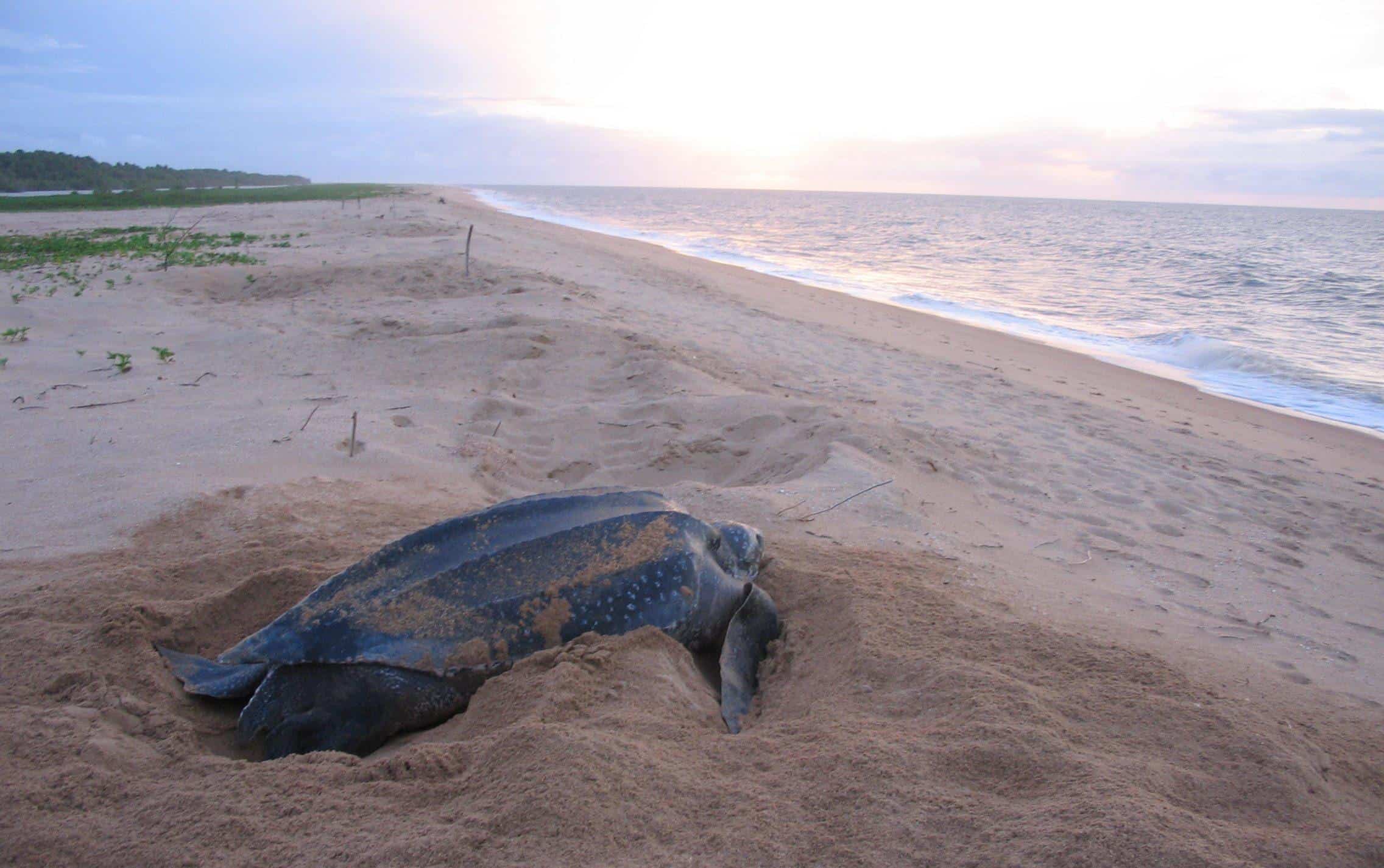
Leatherback female turtle nesting near Galibi
photography by: JuliasTravels
Due to the lack of road infrastructure, only few nature parks in Suriname are easily accessible by vehicle from Paramaribo, one of them is undoubtedly Brownsberg Nature Park. The park is roughly 100km away from the capital, making it a great option for a short excursion or even a day trip.
Brownsberg Park is well known for its rich bio-diversity of fauna and flora, populated by a plethora of animal species, including roughly 400 species of birds and endangered rare mammals like black spider monkeys and red howlers, which are relatively easy to spot while hiking throughout the rainforest. Another place worth visiting is Irenevallen waterfall, gently cascading through lush vegetation into a murky pond, used as a wading pool by visitors.
Most of the land now allocated as the park was once a magnet for gold miners, interestingly the park itself is named after John Brown, an American gold miner who was one of the first prospectors lured to the area by this precious metal.
As a result of a dam construction by the government, a large portion of the bordering rainforest was flooded, consequently creating the Brokopondo Reservoir, now serving as a beautiful backdrop for the park and a graveyard for thousands of trees, part of them still visible as the water is somewhat shallow, overtopped by some tree canopies.
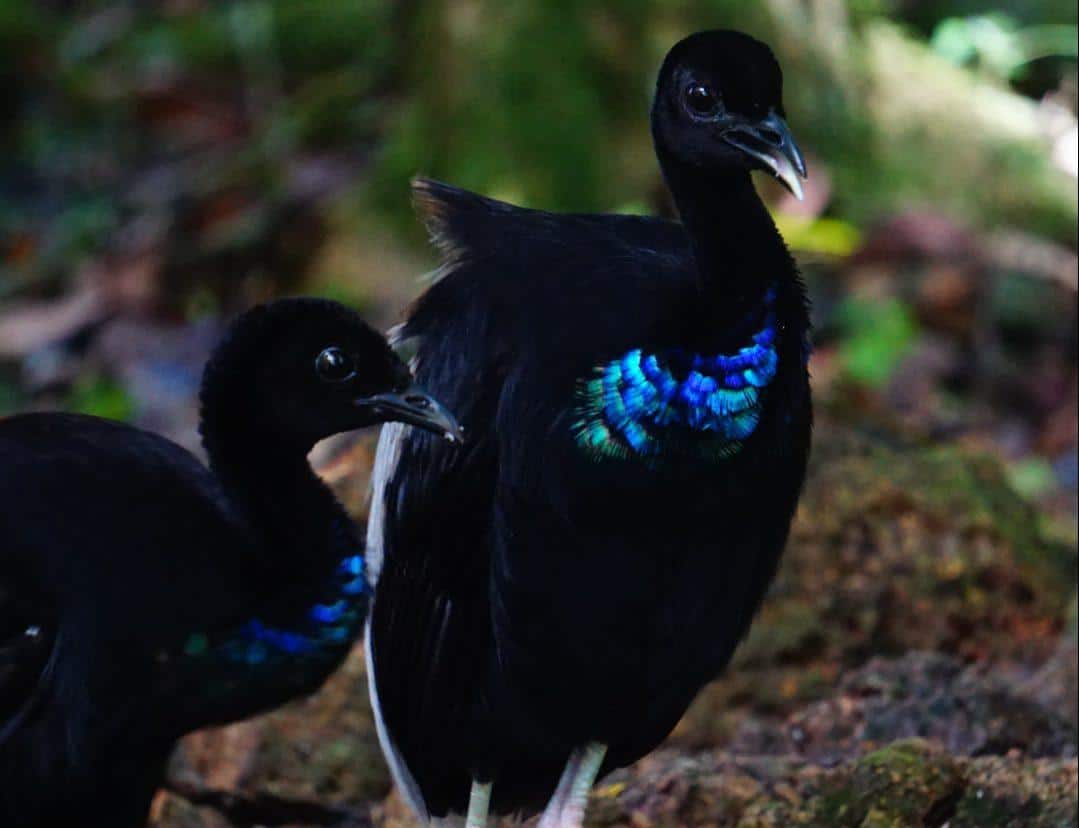
Grey winged trumpeter in Browsberg Nature Park
photography by: maheva bagard laursen
Forming a natural border between Suriname and French Guyana, the Marowijne River both separates and connects the two nations, acting as barrier for crossing while utilized as the main artery for transporting goods and people between them.
Nestled along its bank on the Surinamese side is Albina, a town serving as a gateway to French Guyana and Galibi Nature Reserve. A frequent ferry service connects the town with Saint Laurent du Maroni in French Guyana, a city located just in front of Albina, on the eastern bank of the Marowijne River.
Due to the presence of relatively large population centers on both sides of the river, a hectic and interesting border economy was developed at the town’s riverside, where dozen of small boats park along it and fishermen selling fresh and dried fish.
Unfortunately, most of Albina was destroyed during riots and political turmoil at the 1980’s and 1990’s, so don’t expect to find here marvelous colonial architecture like in Paramaribo, nevertheless, the town is charming despite the lack of tourist oriented sites and can be a pleasant stopover on the way to Galibi Reserve or French Guyana.
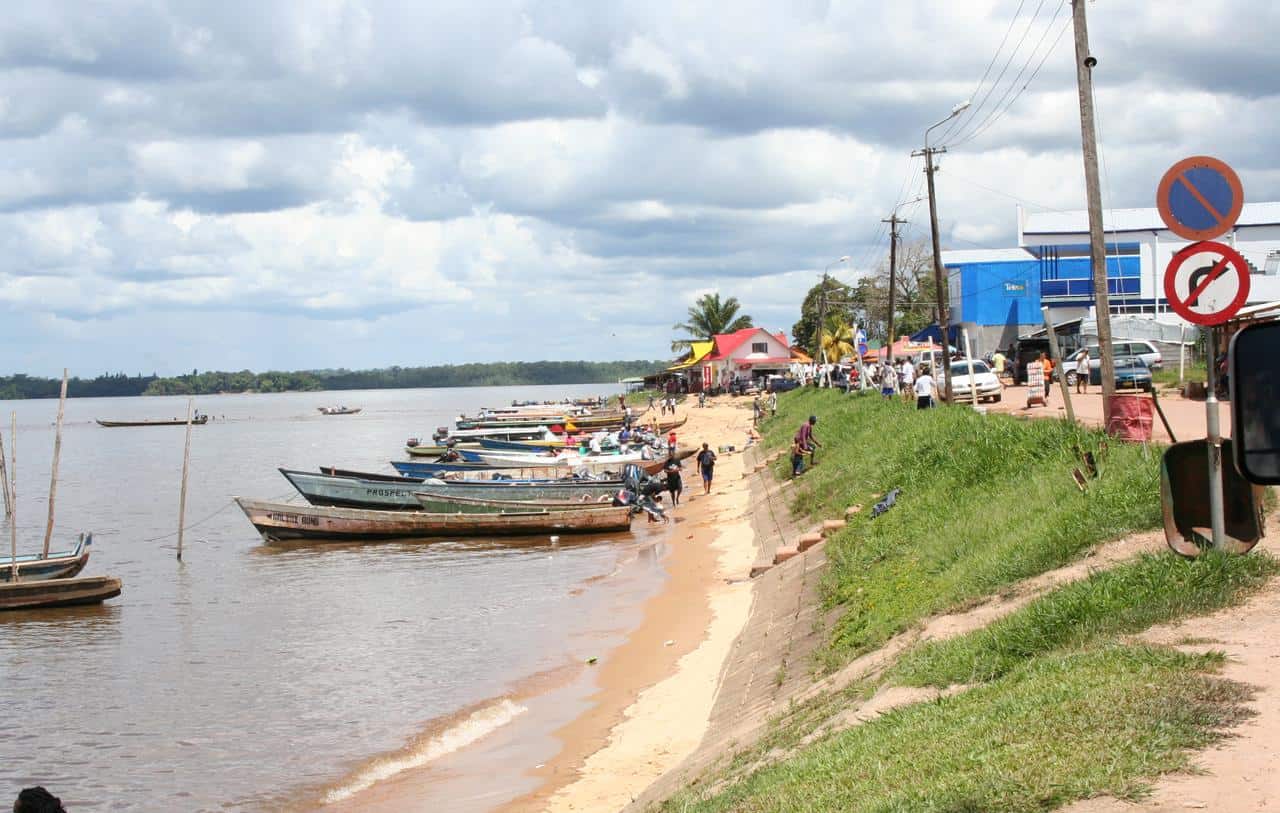
Albina riverfront
photography by: Jan Willem Broekema